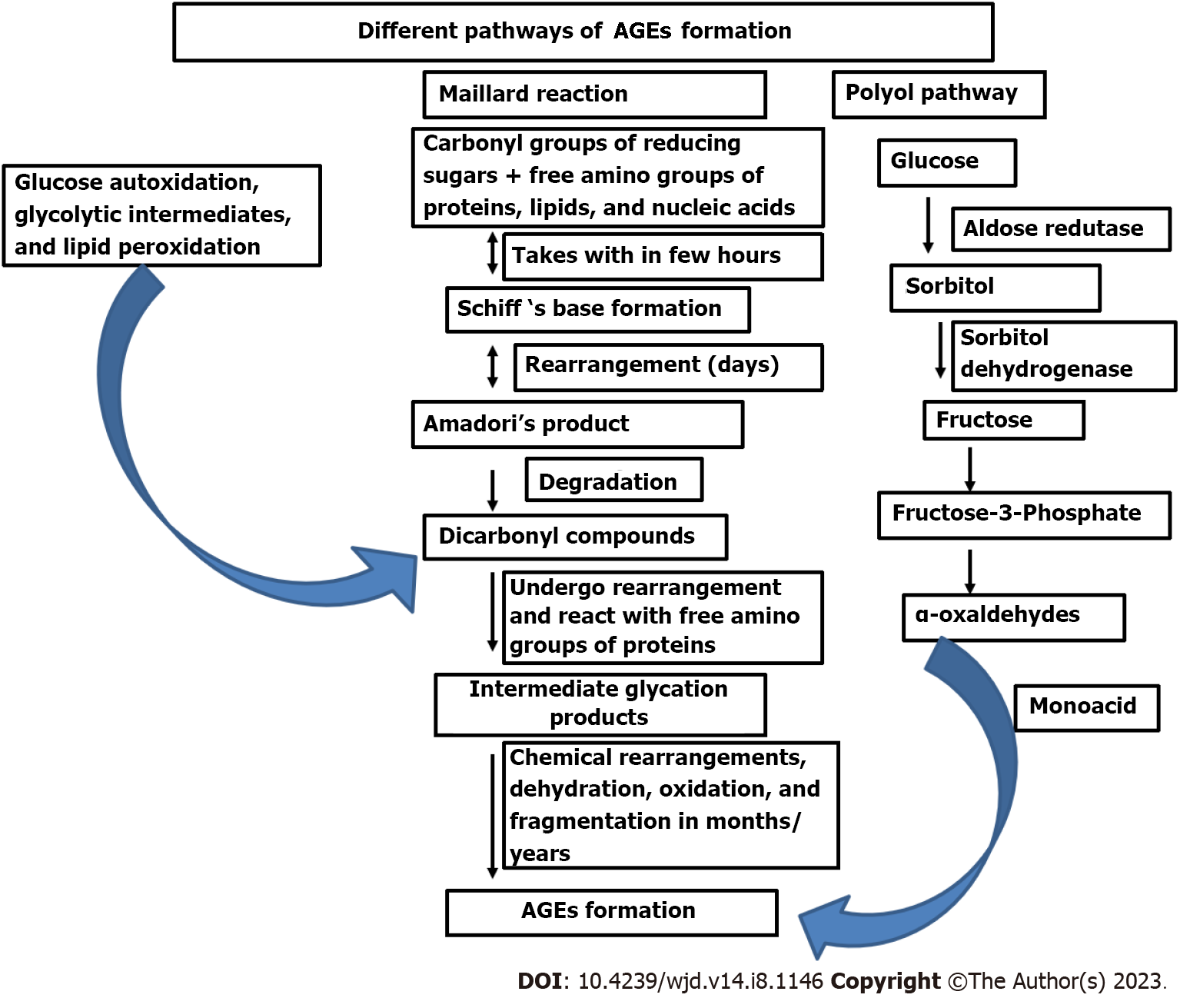Copyright
©The Author(s) 2023.
World J Diabetes. Aug 15, 2023; 14(8): 1146-1162
Published online Aug 15, 2023. doi: 10.4239/wjd.v14.i8.1146
Published online Aug 15, 2023. doi: 10.4239/wjd.v14.i8.1146
Figure 1 Pathways for endogenous advanced glycation end products formation.
Formation of AGEs occurs through different pathways. Maillard reaction which occurs at three stages: (1) Covalent binding of reducing sugars to free amino groups of proteins, lipids, and nucleic acid resulting in reversible Schiff base formation within hours; (2) it undergoes chemical rearrangement over a period of days to form a more stable Amadori product (the reaction is still reversible); and (3) Amadori’s products can be degraded into many reactive dicarbonyl compounds undergoing chemical rearrangements leading to the formation of irreversible AGEs. These spontaneous rearrangements are slow and often taking months to years but enhanced in presence of oxidative stress, and metal ions. Autoxidation of glucose and the peroxidation of lipids into dicarbonyl derivatives also results in AGEs formation. Monosaccharides glycolytic intermediates and dicarbonyl compounds formed during glycolysis also play an important role in AGEs formation. Polyol pathway, where glucose is converted to sorbitol by the enzyme aldose reductase and then sorbitol is converted to fructose by the action of sorbitol dehydrogenase. Fructose metabolites are converted into α-oxaldehydes and interact with monoacids to form AGEs. AGEs: Advanced glycation end products.
- Citation: Bansal S, Burman A, Tripathi AK. Advanced glycation end products: Key mediator and therapeutic target of cardiovascular complications in diabetes. World J Diabetes 2023; 14(8): 1146-1162
- URL: https://www.wjgnet.com/1948-9358/full/v14/i8/1146.htm
- DOI: https://dx.doi.org/10.4239/wjd.v14.i8.1146









